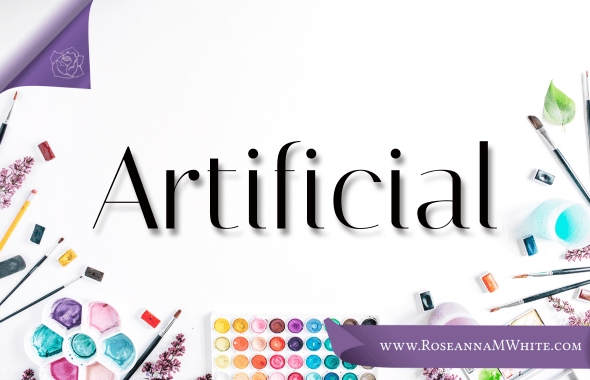
Have you ever paused to really look at the word artificial? If you had, you’d notice those first three letters: art.
And if you look at those first three letters and think about what art is, then you’ll likely go, “Well, huh.” It makes sense, right? Art is something mankind creates, something we make. So then, it should be no surprise that artificial, taken (via Old French) from the Latin artificialis, has its roots in craftsmanship, things made by human hands, skilled work.
Artificial entered the English language way back in the 1300s, and it still carried that meaning, but with a particular slant: “things that aren’t natural.” One of the first recorded uses of the word is artificial day–the time between sunrise and sunset, which is opposed to the natural day of 24-hours. Why? Because that’s the part of the 24-hours that man has contrived to be “day,” the part we use for our labor (generally speaking, and certainly back in the day before electricity!). By the 1400s, it had remembered a bit more of its Latin roots and had been extended to “things made my man’s labor,” rather than just “not natural.” Another hundred years, and it was applied to anything man made with the purpose of replacing something natural–hair, teeth, light, etc.
Which, of course, led to “not genuine, fictitious” as a meaning from about 1640 onward.
Artificial insemination dates from 1894 (?? REALLY ??). And of course today’s hot topic, artificial intelligence, was coined in the 1950s for “intelligent machines.”









 Roseanna M. White is a bestselling, Christy Award winning author who has long claimed that words are the air she breathes. When not writing fiction, she’s homeschooling her two kids, editing, designing book covers, and pretending her house will clean itself. Roseanna is the author of a slew of historical novels that span several continents and thousands of years. Spies and war and mayhem always seem to find their way into her books…to offset her real life, which is blessedly ordinary.
Roseanna M. White is a bestselling, Christy Award winning author who has long claimed that words are the air she breathes. When not writing fiction, she’s homeschooling her two kids, editing, designing book covers, and pretending her house will clean itself. Roseanna is the author of a slew of historical novels that span several continents and thousands of years. Spies and war and mayhem always seem to find their way into her books…to offset her real life, which is blessedly ordinary.